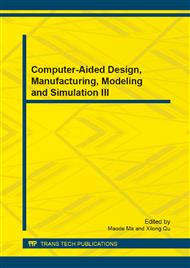p.388
p.392
p.397
p.402
p.407
p.412
p.417
p.425
p.430
The Study on Cognitive Wireless Sensor Netw
Abstract:
In this paper, we have proposed the Energy Efficient Localization of Primary Users for Avoiding Interference in Cognitive Networks. This approach can be implemented in networks where GPS like localization techniques are not available. Our algorithm locates the PU based on leveling and sectoring approach and then disable region is identified to avoid interference to the primary user.
Info:
Periodical:
Pages:
407-411
Citation:
Online since:
October 2013
Price:
Сopyright:
© 2014 Trans Tech Publications Ltd. All Rights Reserved
Share:
Citation:


